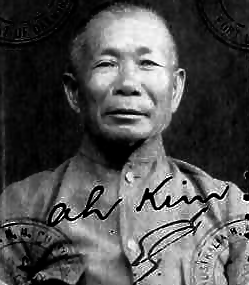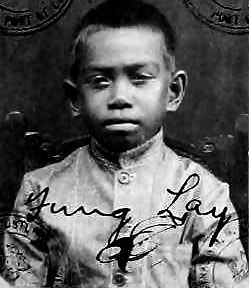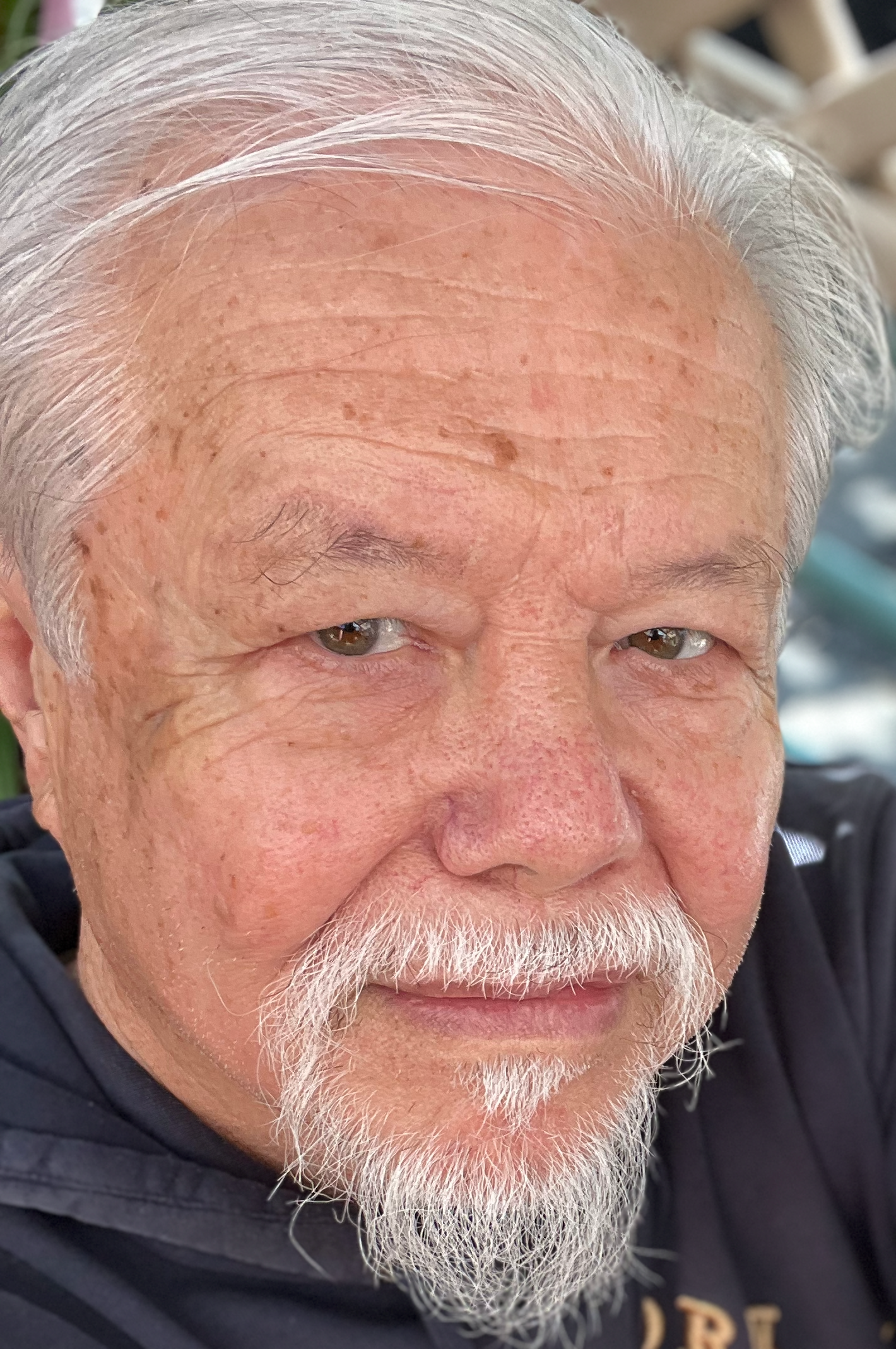Banner image: L.L.Tack and his children on the verandah of the family store, Broome 1928


Why are there so many Chinese names in the government records starting with "Ah"?
When officials recorded the name of the Chinaman entering Australia, they asked the question "What is your name"? This question was commonly interpreted by the immigrant as "What are you called"? So he/she answered "Ah ....." which is the name they were known by to other Chinese. In most cases, it was their given name. So what the official recorded was not a surname or clan name but a friendly way of saying the given name. Hence the surname has become lost to future generations of their ancestors.
Here's an example: when this person embarked in Darwin in 1872 at age eleven he gave his name as "Ah Kim". His great- grand children in Meekathara, W.A. use this as a surname.
If you are searching for an ancestor with a name beginning with "Ah" your search will be difficult, if not impossible. There are hundreds if not thousands of people with the same name. Unless there is another record with their Chinese name (e.g. their signature in Chinese characters on an application for a CEDT), your search is likely to be fruitless.
Using the National Archives Australia
naa.gov.au to find your ancestor’s C.E.D.T.
(Certificate of Exemption from the DictationTest):
Answer these questions to work out if your search is likely to succeed:
***Did he ever travel back to his place of birth?
If YES or DON’T KNOW continue..
***What does the name sound like?
for example “Yip Hoy” as pronounced by its provincial Cantonese owner sounded
like “Yet Foy” or “Yet Hoy” or “Yah Foy” or “Yip Hoy” to the recording official.
Make up all possible variations of these sounds to use later on when you open the NAA database.
***Where did he work and live?
The place he worked will help you to find out which State branch of the NAA his records are kept.
People living in N.S.W. border towns like Mullumbimby, Tweed Heads, Murwillumbah etc
would use Port Brisbane, so the records are kept in NAA Brisbane.
Those working close to the N.S.W. border with Victoria in say Deniliquin, Mildura, Moama N.S.W. etc would leave from
Port Melbourne and their records are kept at the Victorian NAA in Melbourne.
Looking for Alien Registration information
The movement of migrant coloureds was considered essential in case war broke out. All had to register with their local police before each world war. Their movement was also checked when they left for China. If they returned Customs officers at the first port registered their movement within the Commonwealth.
An information snap shot with Family Name, Given Names, Birthplace, Naturalized?, Age, Occupation, Year of Arrival, Residence, Police District, Police subdistrict is available. Alien women had to provide the same details. A physical description was used to identify as well. Whether they could write English and how well, can be worked out from the form.
:
C.E.D.T. photo of Tommy Chong Fun
Tommy Chong Fung registered in 1916 at his local police station and his information is summarised here from the forms below:
Family Name | Given Names | Birthplace | Naturalized | Age | Occupation | Year of Arrival in Queensland | Residence | Police District | Police Subdistrict |
FUNG | Tommy | Canton | No | 43 | Draper | 1889 | Forsayth | Normanton | Forsayth |
Tommy completed this form in his own handwriting. He wrote English well. He used an English given name and his Chinese names. We know his Chinese clan name was Chong and his first given name was Fung.
![]()

contact: ahkeeanthony@gmail.com
mobile 0448 769 393
Artist’s Statement
The lives of ordinary people of colour in colonial Australia are, unlike the rest of the population, regulated by re-entry restriction, alien registration, native protection and immigration restriction. We now see that this mix of East and West has its own particular joys and sorrows. My art creates imaginary scenarios which evoke these restrictions:
The research for this genealogy site has allowed me to develop these art installations:
Federation Penny Arcade Installation
about the effects of the administration of the Chinese/Immigration Restriction and Pacific Islander Labourers Acts on coloured workers & peasant farmers in Queensland using a simulated, interactive Federation penny arcade with re-imagined games
The Invading Hordes Installation 3D animated heads and shoulders of marines, convicts, settlers, police and native police, projected sequentially onto 3 walls, suddenly changing to pig-tailed heads of Chinese indentured labourers which turn yellow (jaundiced) with some faces becoming leperous and melting to be slowly replaced by Afghan, Indian, Japanese, Kanaka etc monochromatic brindle faces, then suddenly the distraught, anonymous faces of today's illegals.
Black Slaves in White Australia: the abuse of indigenous and pacific island labourers in the top end coastal Missions and enterprises of colonial Australasia